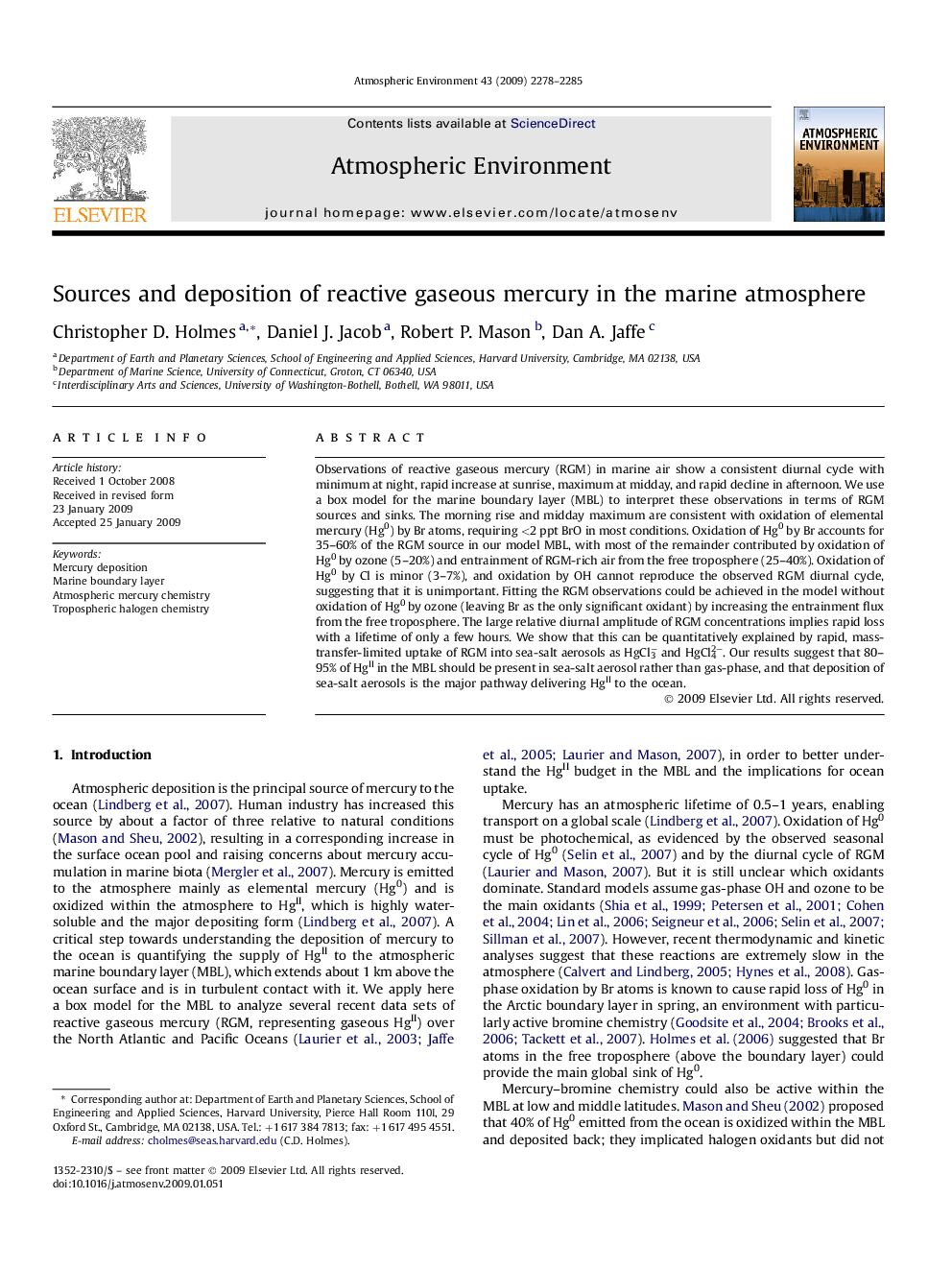| کد مقاله | کد نشریه | سال انتشار | مقاله انگلیسی | نسخه تمام متن |
|---|---|---|---|---|
| 4441413 | 1311106 | 2009 | 8 صفحه PDF | دانلود رایگان |

Observations of reactive gaseous mercury (RGM) in marine air show a consistent diurnal cycle with minimum at night, rapid increase at sunrise, maximum at midday, and rapid decline in afternoon. We use a box model for the marine boundary layer (MBL) to interpret these observations in terms of RGM sources and sinks. The morning rise and midday maximum are consistent with oxidation of elemental mercury (Hg0) by Br atoms, requiring <2 ppt BrO in most conditions. Oxidation of Hg0 by Br accounts for 35–60% of the RGM source in our model MBL, with most of the remainder contributed by oxidation of Hg0 by ozone (5–20%) and entrainment of RGM-rich air from the free troposphere (25–40%). Oxidation of Hg0 by Cl is minor (3–7%), and oxidation by OH cannot reproduce the observed RGM diurnal cycle, suggesting that it is unimportant. Fitting the RGM observations could be achieved in the model without oxidation of Hg0 by ozone (leaving Br as the only significant oxidant) by increasing the entrainment flux from the free troposphere. The large relative diurnal amplitude of RGM concentrations implies rapid loss with a lifetime of only a few hours. We show that this can be quantitatively explained by rapid, mass-transfer-limited uptake of RGM into sea-salt aerosols as HgCl3− and HgCl42−. Our results suggest that 80–95% of HgII in the MBL should be present in sea-salt aerosol rather than gas-phase, and that deposition of sea-salt aerosols is the major pathway delivering HgII to the ocean.
Journal: Atmospheric Environment - Volume 43, Issue 14, May 2009, Pages 2278–2285